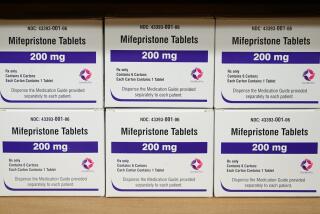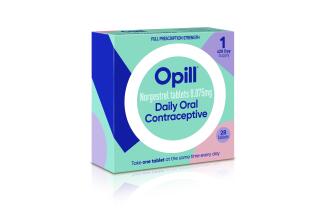Condoms fail, so teens should consider implants and IUDs, doctors say
To prevent teen pregnancies, pediatricians should talk with their adolescent patients about birth control, starting with hormonal implants and IUDs, according to an updated policy statement from the American Academy of Pediatrics.
Progestin implants and intrauterine devices are not widely used by teens, but they are the most effective methods of contraception available. Only 1 in 2,000 women using progestin implants has an unintended pregnancy during the first year of use. Depending on the type of IUD, the rate of accidental pregnancy ranges from 1 in 125 to 1 in 500.
Nearly half of all teens are sexually active during high school, and about 750,000 young women become pregnant each year, federal data show. “More than 80% of these pregnancies [are] unplanned, indicating an unmet need for effective contraception in this population,” an expert panel wrote in the AAP policy statement published Monday.
Condoms are the most common form of birth control for teens, with 52% of young women and 75% of young men reporting their use, according to the National Survey of Family Growth, an ongoing study conducted by the Centers for Disease Control and Prevention. Condoms are important for preventing the spread of sexually transmitted infections, or STIs, but they are not nearly as effective at preventing pregnancy. In the real world, 18% of women who start using condoms for birth control become pregnant within one year, according to the policy statement.
In discussing birth control with their patients, pediatricians should encourage teens to abstain from sex if they are not emotionally ready for it, the panel wrote. “Abstinence is 100% effective in preventing pregnancy and STIs,” the statement reads. “However, existing data suggest that, over time, perfect adherence to abstinence is low (ie, many adolescents planning on abstinence do not remain abstinent). Therefore, pediatricians should not rely on abstinence counseling alone.”
As much as possible, the decision about whether to use contraception should be made by patients, not dictated by their parents, the academy advises. In addition, doctors should do as much as they can to protect the confidentiality of their underage patients. Twenty states have some limits on allowing minors to consent to using birth control, according to the Guttmacher Institute. (Most other states and the District of Columbia allow minors to make their own decisions regarding contraception, and four states have no laws on the books that would restrict them from doing so.)
The expert panel emphasized that progestin implants – sold under the brand names Implanon and Nexplanon – and IUDs – including Mirena, Skyla and ParaGard – are the most effective options for women who want to avoid becoming pregnant.
The implants are inserted into the inside of the upper arm and are effective for three years. The IUDs can last for three to 10 years, depending on the type. Once these devices are in place, women don’t have to remember to do anything for them to work; that’s why they work so well, the experts wrote.
Other options include progestin injections, which have a failure rate of about 6% and must be given every 13 weeks; birth control pills, which must be taken every day and have a failure rate of 9%; the contraceptive vaginal ring, which must be replaced about once a month and is about as effective as the pill; and the transdermal contraceptive patch, which has to be replaced weekly and also has a failure rate of about 9%.
Doctors should discourage their patients from relying on the withdrawal method to prevent pregnancy. Studies show that 57% of young women use this method, but it has a 22% failure rate, the experts wrote.
Pediatricians who are not well-versed in some of these newer forms of birth control should get themselves up to speed or refer their patients to another healthcare provider who is, according to the new policy statement.
Follow me on Twitter @LATkarenkaplan and “like” Los Angeles Times Science & Health on Facebook.







